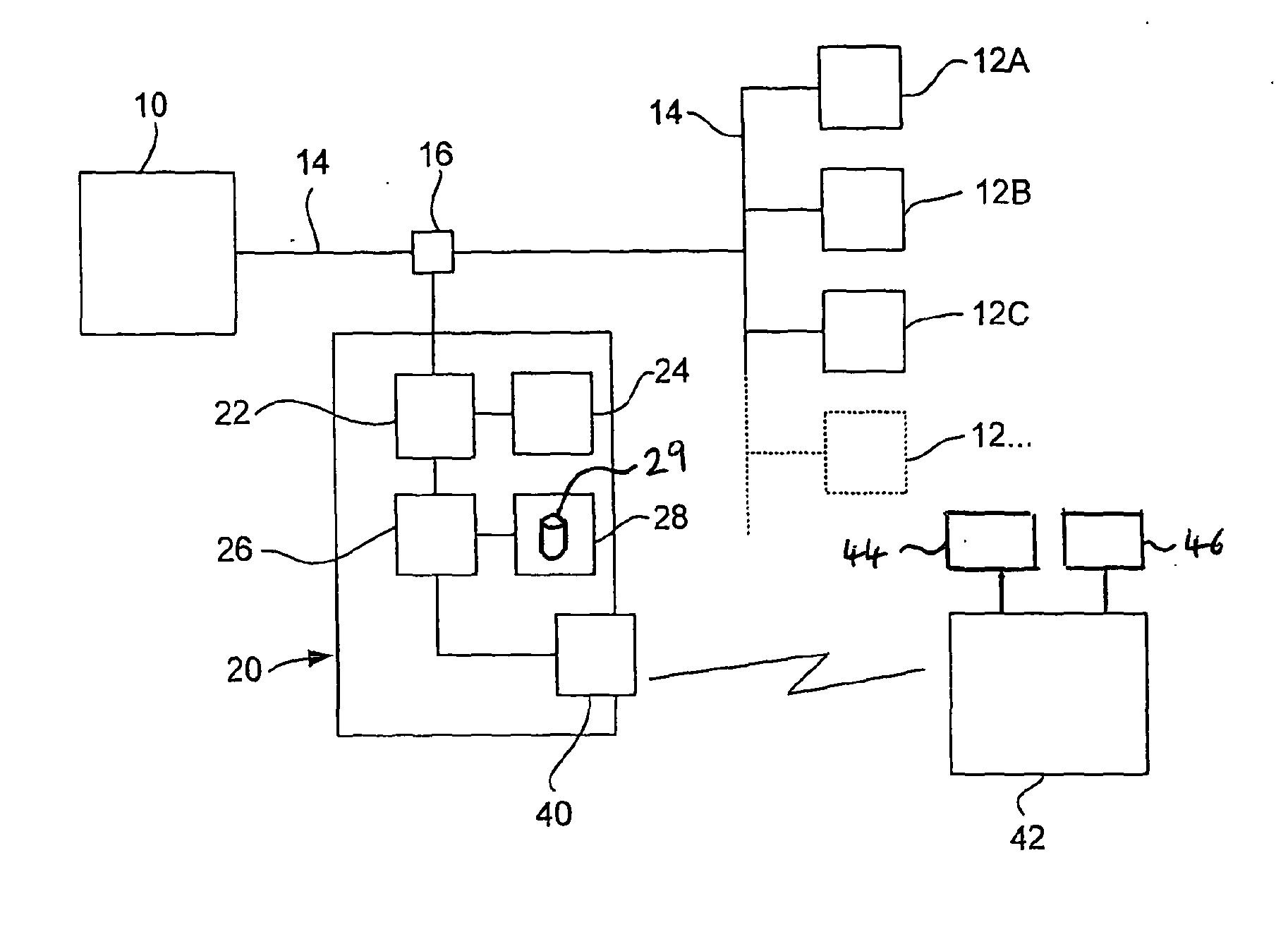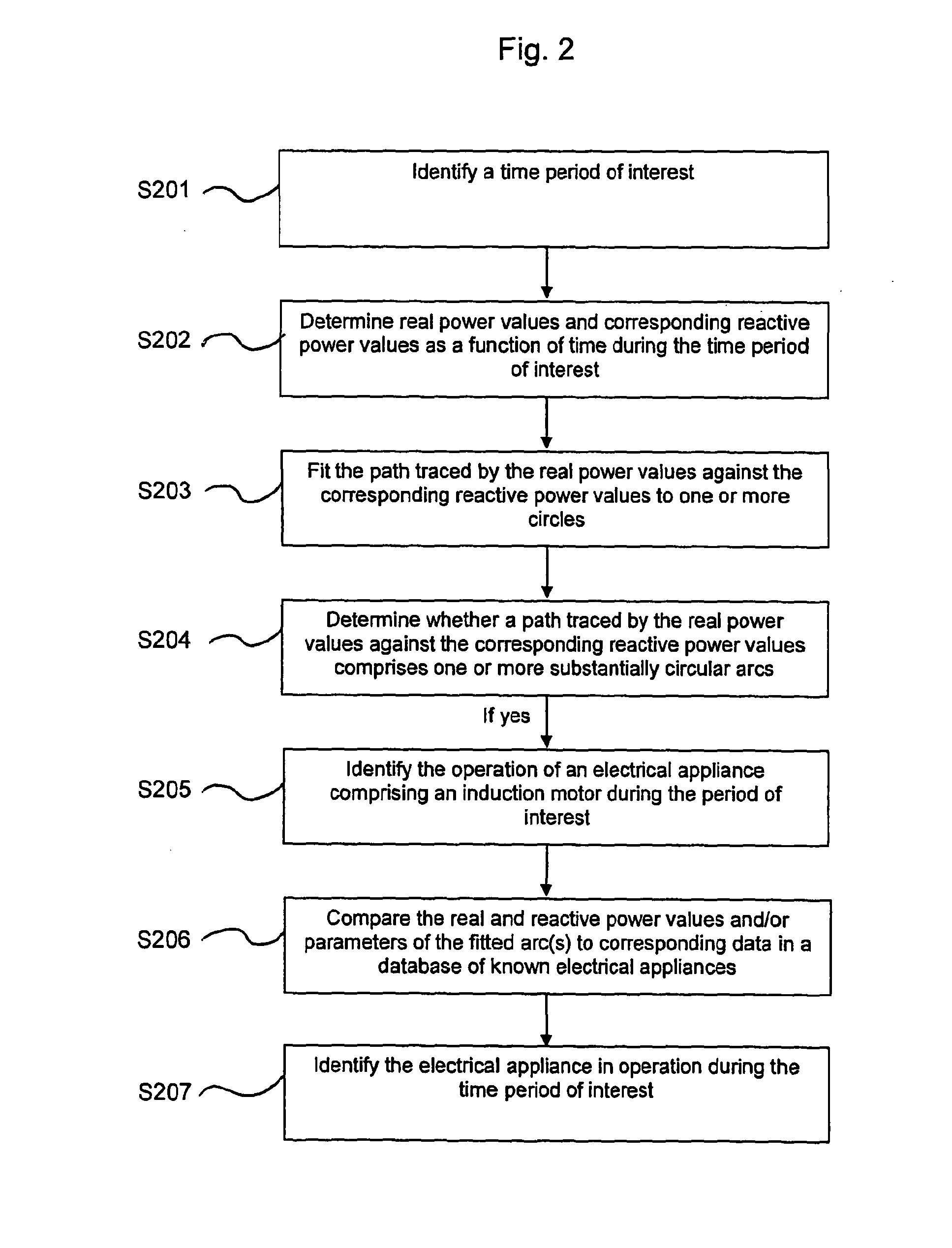Identifying the operation of a specified type of appliance
a technology for identifying the operation and type of appliances, applied in the direction of electric devices, instruments, transportation and packaging, etc., can solve the problems of not being able to connect such metering devices to permanently-wired appliances, giving very little idea of how they are actually using energy and where they can cut back, and inconvenient to obtain information
- Summary
- Abstract
- Description
- Claims
- Application Information
AI Technical Summary
Benefits of technology
Problems solved by technology
Method used
Image
Examples
Embodiment Construction
[0052]The method and apparatus of the present invention may be used to identify the operation of an electrical appliance comprising an induction motor. As described in the Summary of the Invention, the methodology uses inherent properties of induction motors to enable their identification and differentiation from other types of electrical appliance (e.g. resistance heaters).
[0053]The Appliance Identification Apparatus
[0054]FIG. 1 shows the hardware components of a system incorporating the apparatus for identifying the operation of an electrical appliance comprising an induction motor. In FIG. 1, the electricity supply to the site, for example a house, apartment, office, shop, school and so forth, is denoted 10. The electricity is supplied to a plurality of electrical appliances 12A, 12B, 12C, 12 . . . by means of conventional wiring 14. The appliances and wiring are simply shown schematically in FIG. 1, but may, of course, be configured in any appropriate way, such as via a consumer...
PUM
 Login to View More
Login to View More Abstract
Description
Claims
Application Information
 Login to View More
Login to View More - R&D
- Intellectual Property
- Life Sciences
- Materials
- Tech Scout
- Unparalleled Data Quality
- Higher Quality Content
- 60% Fewer Hallucinations
Browse by: Latest US Patents, China's latest patents, Technical Efficacy Thesaurus, Application Domain, Technology Topic, Popular Technical Reports.
© 2025 PatSnap. All rights reserved.Legal|Privacy policy|Modern Slavery Act Transparency Statement|Sitemap|About US| Contact US: help@patsnap.com



